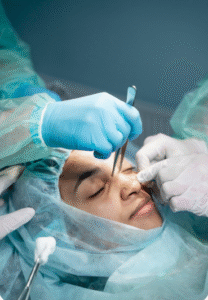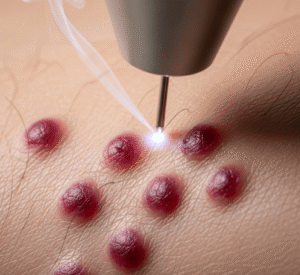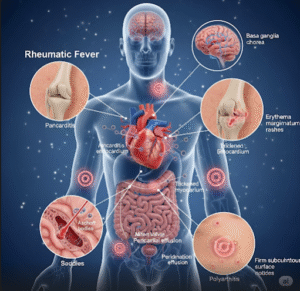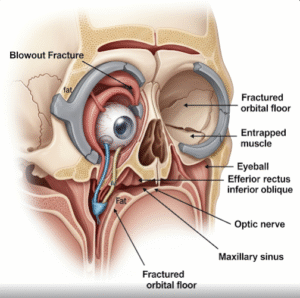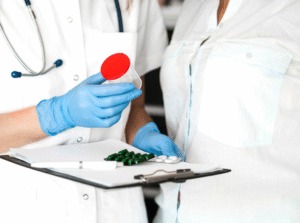What it is
Plastic surgery is a medical specialty focused on the reconstruction, restoration, or enhancement of the body’s appearance and function. It includes both reconstructive surgery, which repairs defects caused by injury, disease, or congenital conditions, and cosmetic (aesthetic) surgery, which improves or alters physical appearance according to patient preference.
➡ Key objectives of plastic surgery:
- Reconstructive → Restore normal function and appearance after trauma, cancer surgery, or congenital defects
- Cosmetic → Enhance aesthetic features, symmetry, and self-confidence
💡 Important points:
- Plastic surgery can involve skin, soft tissue, bones, and facial structures
- Korea is globally renowned for advanced cosmetic surgery techniques, particularly in facial and body contouring procedures
- Procedures are performed in specialized hospitals, clinics, and medical centers with state-of-the-art technology
Why it’s done
Plastic surgery is performed for both medical and aesthetic reasons.
➤ Medical indications include:
- Reconstructive surgery → After trauma, burns, or tumor removal
- Congenital deformities → Cleft lip/palate, craniofacial abnormalities
- Functional impairment → Rhinoplasty for breathing difficulties, eyelid surgery for vision obstruction
- Scar revision → Improve mobility or cosmetic appearance of scar tissue
➤ Cosmetic indications include:
- Facial enhancement → Rhinoplasty, blepharoplasty, facelift
- Body contouring → Liposuction, abdominoplasty, breast augmentation or reduction
- Skin rejuvenation → Botox, fillers, laser treatments
- Anti-aging procedures → Brow lift, neck lift, and dermal treatments
➤ Key benefits:
- Restores function in reconstructive cases
- Improves appearance and self-esteem in cosmetic cases
- Minimally invasive options available for certain procedures
- Customized outcomes according to individual anatomy and preferences
Alternatives
Depending on the patient’s goals, alternatives to surgery may include:
✔ Non-surgical cosmetic procedures → Botox, dermal fillers, chemical peels, laser resurfacing
✔ Orthodontic or dental treatments → For jawline or smile correction
✔ Physical therapy or rehabilitation → In post-trauma reconstructive cases
✔ Scar management → Silicone sheets, steroid injections, or laser therapy
✔ Makeup or prosthetics → Temporary cosmetic enhancements
Note: While non-surgical alternatives may provide temporary or subtle improvements, surgical procedures offer permanent and more dramatic results, especially for structural changes.
Preparation
Proper preparation ensures safe surgery and optimal outcomes:
🔹 Medical assessment
- Comprehensive evaluation including medical history, physical exam, and imaging
- Blood tests and diagnostic studies as needed
- Consultation with plastic surgeon and anesthesiologist
🔹 Lifestyle and medication adjustments
- Avoid smoking, alcohol, and certain medications that may interfere with healing
- Maintain healthy diet and hydration
🔹 Patient education
- Understand the procedure, expected outcomes, risks, and recovery
- Discuss realistic expectations and aesthetic goals
- Schedule preoperative planning sessions for surgical design
🔹 Logistics
- Arrange transportation and post-operative care
- Prepare comfortable recovery space at home
How it’s done
Plastic surgery procedures vary widely depending on type and location:
➡ Step-by-step approach for surgical procedures:
- Anesthesia
- Local, regional, or general anesthesia depending on procedure
- Monitored by an anesthesiologist for patient safety
- Surgical procedure
- Reconstructive surgery → Repair defects, restore function, reconstruct tissues
- Cosmetic surgery → Reshape, reduce, or augment body parts according to plan
- Closure and dressing
- Sutures, staples, or adhesive strips used
- Dressings, drains, or compression garments applied to support healing
- Post-operative monitoring
- Observation in recovery room
- Pain management, infection prevention, and mobility assistance
💡 Tips for optimal outcomes:
- Follow surgeon’s pre- and post-operative instructions strictly
- Attend all follow-up visits for monitoring and suture removal
- Avoid strenuous activity until cleared by the surgeon
Recovery / Expected Outcomes
Recovery varies depending on procedure complexity and patient health:
🔹 Short-term recovery:
- Swelling, bruising, and mild discomfort are common
- Dressings, drains, or splints may be required
- Duration varies: 1–2 weeks for minor procedures, 4–6 weeks for major surgery
🔹 Long-term outcomes:
- Improved function and aesthetic appearance
- Scars gradually fade over months to a year
- Follow-up treatments may include revision surgery or non-surgical enhancements
🔹 Patient benefits:
- Enhanced self-esteem and body confidence
- Restored function in reconstructive cases
- Sustainable aesthetic improvement with proper care
Complications / Considerations
Plastic surgery carries potential risks, which are minimized with proper planning and skilled surgeons:
⚠ Common complications → Swelling, bruising, pain, temporary numbness
⚠ Infection or bleeding → Rare with sterile surgical techniques
⚠ Scarring or asymmetry → Varies based on procedure and healing
⚠ Anesthesia risks → Monitored carefully in surgical centers
⚠ Need for revision → Some cases may require additional procedures
Mitigation:
- Choose board-certified plastic surgeons
- Follow pre- and post-operative instructions
- Report any unusual symptoms promptly
Treatment Options in Korea
Korea is a global hub for plastic surgery, known for innovative techniques, high standards, and natural-looking results.
🏥 Hospitals and clinics offering plastic surgery:
- Seoul National University Hospital (SNUH) → Reconstructive and craniofacial surgery
- Asan Medical Center → Comprehensive aesthetic and reconstructive procedures
- Samsung Medical Center → Advanced microsurgery and cosmetic surgery
- Specialized cosmetic clinics in Seoul, Busan, and Incheon → Rhinoplasty, eyelid surgery, facial contouring, body sculpting
💰 Insurance and cost:
- National Health Insurance may cover reconstructive surgery after trauma or for congenital defects
- Cosmetic surgery is typically paid out-of-pocket, with costs varying by procedure and hospital
- Private insurance may cover post-trauma reconstructive procedures
🔹 Additional support:
- Pre- and post-operative counseling for mental well-being and realistic expectations
- Specialized nurses and rehabilitation support for faster recovery
- Access to follow-up treatments, scar management, and aesthetic refinements
Conclusion
Plastic surgery in Korea offers safe, effective, and advanced solutions for both reconstructive and cosmetic purposes.
By combining surgical precision, modern technology, and expert care, plastic surgery provides:
- Restoration of function and appearance in medical cases
- Enhanced aesthetics and self-confidence in cosmetic cases
- Minimally invasive options for select procedures
- Long-term satisfaction through personalized treatment plans and follow-up care






